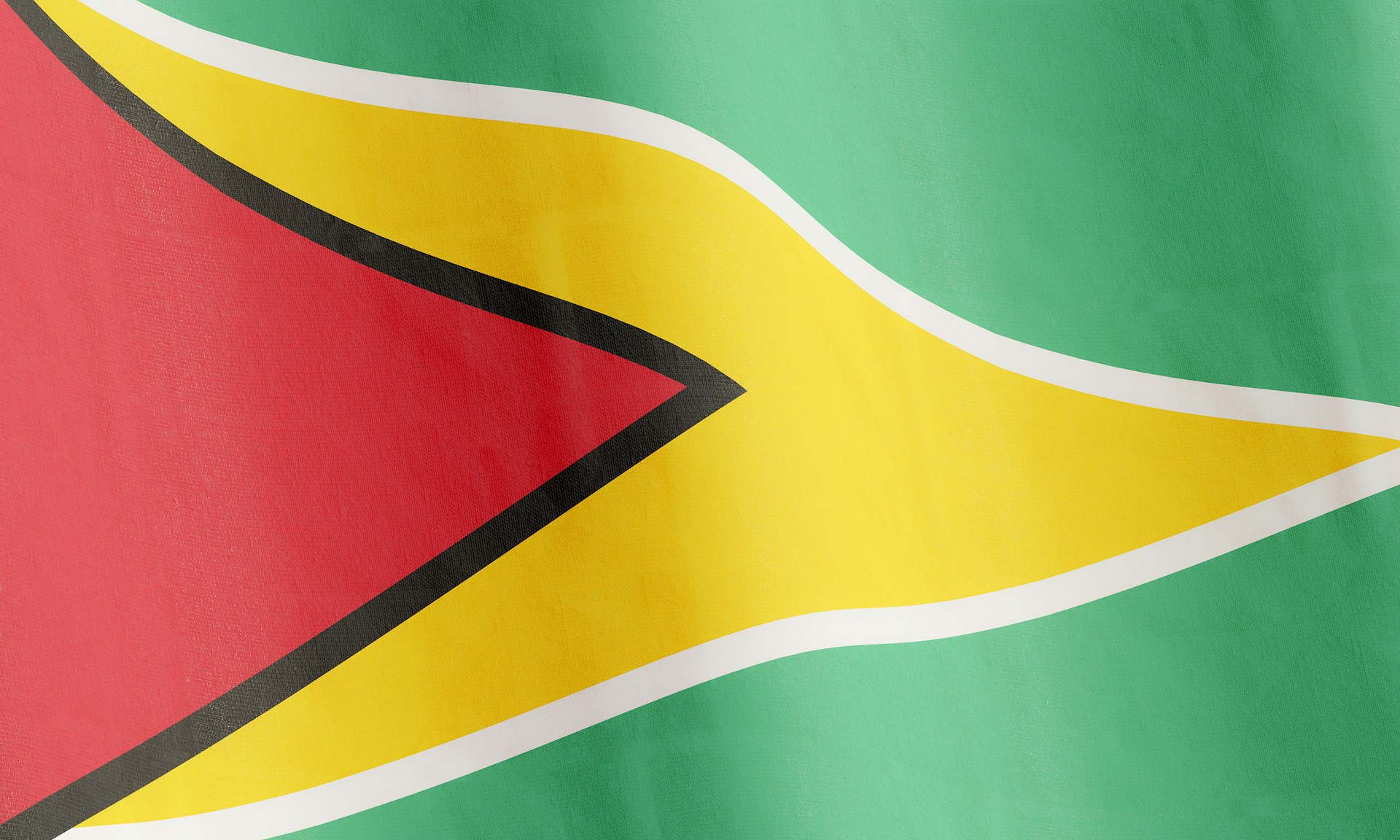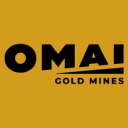Guyana: Canadian Mining Giants Control 15.5 Million Ounces of Gold

President Calls for Broader Investment as Mining Sector Delivers Strong Returns
President Irfaan Ali has positioned Guyana as an increasingly attractive destination for Canadian investment, highlighting the country's mining-friendly policies as five Canadian firms collectively control an estimated 15.5 million ounces of gold across various development stages. Speaking at a Canadian High Commission reception in Georgetown, Ali emphasized the deepening economic partnership while urging Canadian businesses to explore opportunities beyond traditional mining sectors.
The president's comments come as Guyana's mining sector continues to attract significant foreign investment, driven by favorable regulatory frameworks and substantial mineral resources. Canada remains the dominant foreign investor in Guyana's mining industry, with companies spanning from advanced exploration to near-production phases.
Guyana's Golden Moment in Global Mining
The South American nation's emergence as a premier mining destination reflects broader trends in global resource allocation, as investors seek jurisdictions offering political stability, favorable regulations, and untapped geological potential. Guyana's position within the prolific Guiana Shield—a geological formation spanning parts of Venezuela, Suriname, French Guiana, and northern Brazil—has long been recognized for its mineral wealth, but recent technological advances and improved infrastructure have unlocked previously inaccessible deposits.
The country's mining-friendly regulatory environment stands in stark contrast to increasing resource nationalism seen elsewhere in Latin America. This stability has attracted not only exploration capital but also the long-term development investments necessary to bring major projects to production. With gold prices maintaining elevated levels above $2,000 per ounce, the economics of Guyana's deposits have become increasingly compelling for international investors.
Diversification Beyond Mining Urged
While acknowledging Canada's strong position in mining, President Ali stressed the need for economic diversification. He identified agriculture, infrastructure, public housing, eco-tourism, and climate-smart agriculture as key sectors ripe for Canadian investment.
"We believe that there is significant untapped potential," Ali stated, emphasizing innovation opportunities that align with sustainability goals. The president also praised Canada's governance support, particularly for Indigenous communities, describing the partnership as collaborative rather than prescriptive.
This diversification push comes at a strategic time for Guyana, as the country leverages revenues from its booming oil sector to fund infrastructure development and economic modernization. The government's approach suggests a sophisticated understanding of resource curse dynamics, actively working to prevent over-dependence on any single commodity sector. For investors, this creates opportunities across multiple verticals while providing confidence in long-term political and economic stability.
Infrastructure Development Supports Mining Growth
Guyana's mining sector benefits from ongoing infrastructure improvements that reduce operational costs and improve project economics. The government's commitment to connecting mining regions with Georgetown and Linden via paved roads represents a significant catalyst for sector development. These infrastructure investments reduce transportation costs, improve supply chain reliability, and enhance the overall investment proposition for mining companies.
The development of reliable power infrastructure, improved telecommunications networks, and expanded port facilities further strengthens the country's competitive position. These foundational improvements not only benefit existing operations but also make previously marginal deposits economically viable, potentially expanding the resource base available for development.
Major Canadian Mining Operations Poised for Growth
Aris Mining: The Heavyweight Contender
Aris Mining leads the pack with its Toroparu project, boasting indicated resources of 5.4 million ounces of gold. Located in the Cuyuni-Mazaruni district, the project represents one of the largest undeveloped gold assets in the region. The company benefits from existing infrastructure including an exploration camp, airstrip, and road access, positioning it advantageously for large-scale open-pit operations.
The project's scale and established infrastructure base make it particularly attractive to investors seeking exposure to Guyana's growing mining sector. Aris is currently optimizing its development strategy amid increasing merger and acquisition activity in the country's gold mining space.
The Toroparu project encompasses two primary deposits: the main Toroparu deposit and the Sona Hill deposit, located approximately five kilometers southeast of the primary site. This dual-deposit structure provides operational flexibility and potential for phased development, allowing the company to optimize cash flow generation during the early production years.
Extensive exploration and drilling programs have confirmed the potential for a long-life operation, with both open-pit and underground mining scenarios under consideration. The project's location within established mining infrastructure corridors reduces development risk and capital requirements compared to greenfield projects in more remote locations. For institutional investors, Toroparu represents a cornerstone asset with the scale and longevity typically required for major mining portfolios.
G Mining Ventures: Ready for Production
Following its 2024 business combination with Reunion Gold, G Mining Ventures (GMIN) now controls the Oko West Gold Project, a 71-square-kilometer advanced-stage exploration project. The operation is projected to produce 350,000 ounces annually over 12.3 years at an all-in sustaining cost of $1,123 per ounce.
Recent feasibility studies indicate strong financial returns driven by low production costs. The project holds 5.4 million indicated ounces and 0.4 million inferred ounces, supported by extensive drilling across 505 diamond drill holes and 366 reverse circulation holes. G Mining Ventures has secured an Interim Environmental Permit and expects a construction decision in the second half of 2025.
The Oko West project's development timeline positions it as one of the nearest-term production opportunities among the Canadian-controlled assets in Guyana. The company's ability to secure environmental permitting demonstrates regulatory progress and reduces execution risk for investors. With construction decision anticipated within months, G Mining Ventures offers exposure to near-term production cash flows in a jurisdiction with proven operational track record.
Louis-Pierre Gignac, President & CEO of G Mining Ventures comments, "The beauty about Oko West is they're [the government] very eager to see activity so the permitting process is very straightforward and streamlined ...building access roads, air strip, permanent camp facility...so that's something that you don't really see very often"
The project's cost structure appears highly competitive within the global gold mining landscape. At $1,123 per ounce all-in sustaining costs, Oko West would rank in the lower half of the global cost curve, providing substantial margins at current gold prices and offering downside protection should commodity prices decline. The combination of scale, grade, and cost structure makes this project particularly attractive for investors seeking immediate exposure to Guyana's mining sector growth.
Located in Region Seven, the project benefits from established mining activity in the area and access to experienced local workforce and contractor networks. The 12.3-year mine life provides sufficient duration for capital payback while offering potential for resource expansion through ongoing exploration activities.
Omai Gold: Revitalizing a Historic Producer
Omai Gold Mines Corp. and their CEO, Elaine Ellingham have breathed new life into the historic Omai project, which produced 3.8 million ounces between 1993 and 2005 when gold traded below $400 per ounce. The company's February 2024 Mineral Resource Estimate shows 2.0 million indicated ounces and 2.3 million inferred ounces across the Wenot open pit and Gilt Creek underground deposits.
A Preliminary Economic Assessment projects 1.84 million ounces of production over 13 years, with annual output averaging 142,000 ounces and peaking at 184,000 ounces. The project benefits from existing infrastructure and improving connectivity to Georgetown and Linden via new paved roads. Omai has completed over 25,000 meters of additional drilling since the resource estimate, with plans for updated assessments throughout 2025.
The historic nature of the Omai project provides several advantages for modern development. Existing tailings facilities, processing infrastructure, and established mining permits reduce both capital requirements and permitting timelines compared to greenfield developments. The property's previous production history also provides extensive geological and metallurgical data, reducing technical risk and improving development confidence.
"The government is very strongly pro-mining" and Ellingham also observes infrastructure improvements: "There's a road the main corridor that goes down to Brazil is only 10 kilometers away and that's being paved so that's pretty spectacular access for any mine."
Omai's location within the Guiana Shield greenstone belt positions it in one of the world's most prolific gold-producing geological formations. The company's aggressive drilling program since 2021 has rapidly expanded the known resource base, with recent results identifying additional high-grade zones that could extend mine life and improve project economics.
The dual-deposit structure, combining the Wenot open pit with the Gilt Creek underground operation, provides operational flexibility and potential for phased development. The open pit component offers lower-cost, near-surface production to generate early cash flows, while the underground deposit provides longer-term production sustainability. This structure appeals to investors seeking both near-term returns and long-term asset value.
Omai's position as one of the fastest-growing gold camps in the Guiana Shield reflects both the geological potential and the company's execution capabilities. The aggressive exploration program and rapid resource growth demonstrate management's ability to unlock value through systematic development, a key consideration for growth-oriented investors.
G2 Goldfields: High-Grade Opportunities
G2 Goldfields has demonstrated significant resource growth at its Oko Project, reporting a 60% increase in indicated resources to 1.5 million ounces and a 49% increase in inferred resources to 1.6 million ounces as of March 2025. The 83,967-acre property features three main zones, with the high-grade Oko Main Zone containing 609,000 ounces at 10.25 grams per tonne.
The shallow, high-grade nature of the deposit, extending from just 5 to 370 meters below surface, positions it among the highest-grade gold deposits globally at such accessible depths. This characteristic could translate to lower capital expenditure requirements and faster payback periods for investors.
The Oko Project's three-zone structure provides multiple development options and risk diversification within a single asset. The Oko Main Zone offers immediate high-grade targets suitable for early production, while the bulk-tonnage Ghanie Zone presents longer-term, large-scale development potential. The recently identified Oko Northwest Zone adds further exploration upside and district-scale potential.
Resource growth at the Ghanie Zone, reaching 663,400 indicated ounces at 2.01 grams per tonne and over one million inferred ounces at 2.64 grams per tonne, demonstrates the project's potential for large-scale open-pit development. This zone's consistency and scale make it attractive for investors seeking substantial production profiles and long mine lives.
The rapid resource expansion, particularly the 60% increase in indicated resources, reflects both successful exploration execution and the geological fertility of the broader district. For investors, this growth trajectory suggests continued value creation potential through ongoing exploration and development activities.
Dan Noone, CEO of G2 Goldfields notes, "It's a great country to be working in. I mean really has come a long way since we built the Aurora mine back in 2014 under the offices of GI goldfields but there was no one really down here at the time, and it was hard to get investors. Now with Exxon's with their 8 and a half billion barrels now it's not hard to convince people to invest in Guyana."
G2 Goldfields' position within the competitive Guyana mining landscape is enhanced by the project's high-grade characteristics and shallow depth profile. These attributes typically translate to lower mining costs, reduced capital intensity, and improved project returns compared to deeper, lower-grade alternatives.
Mako Mining: Development Pipeline
Mako Mining acquired the Eagle Mountain Gold Project through its 2024 takeover of Goldsource Mines, inheriting 1.2 million indicated ounces and 582,000 inferred ounces. The company plans to submit environmental and mining license applications by late 2025, targeting construction in 2026 and first gold production in 2027.
Located in the Mahdia district approximately 200 kilometers south-southwest of Georgetown, Eagle Mountain represents a strategic addition to Mako's portfolio following the Goldsource acquisition. The project's phased development approach, with Phase 1 targeting near-surface resources and Phase 2 focusing on deeper fresh rock mineralization, provides operational flexibility and capital efficiency.
Recent drilling results have highlighted high recovery rates from shallow zones, confirming the project's technical viability and supporting the planned development timeline. The identification of significant deeper mineralization potential suggests substantial upside beyond the current resource base, offering investors exposure to both near-term production and longer-term exploration success.
Mako's development strategy emphasizes the project's position within Guyana's emerging gold mining jurisdiction, citing favorable permitting environments and growing foreign investment as key advantages. The company's experience with Goldsource's previous work on the property provides institutional knowledge and reduces execution risk for the planned development program.
The Eagle Mountain project's 2027 production target positions it in the middle tier of development timelines among the Canadian assets in Guyana. This timing allows investors to benefit from market conditions and infrastructure improvements while avoiding the extended development periods associated with larger, more complex projects.
Investment Climate & Outlook
The concentration of Canadian mining investment in Guyana reflects the country's competitive regulatory environment and geological potential. President Ali's emphasis on governance partnerships, particularly regarding Indigenous communities, signals a mature approach to resource development that could appeal to ESG-focused investors.
The timing of these developments coincides with increased merger and acquisition activity in Guyana's mining sector, potentially creating opportunities for strategic consolidation or partnership arrangements. With multiple projects moving through feasibility and permitting phases simultaneously, investors have access to assets across various risk-return profiles.
The government's push for economic diversification, while maintaining mining-friendly policies, suggests a balanced approach to development that could provide long-term stability for mining investments while creating additional opportunities in complementary sectors.
Market Dynamics & Valuation Considerations
The collective 15.5 million ounces controlled by Canadian companies represents significant value at current gold prices. With gold trading above $2,000 per ounce, the in-ground value of these resources exceeds $31 billion, though actual valuations depend on development costs, production timelines, and market conditions.
The staggered development timeline across these projects provides investors with various entry points and risk profiles. Near-term production assets like GMIN's Oko West offer immediate cash flow exposure, while longer-term development projects like Aris's Toroparu provide leveraged exposure to gold price appreciation and resource expansion.
The competitive cost structures demonstrated across these projects, particularly GMIN's projected $1,123 per ounce all-in sustaining costs, suggest strong margins and downside protection. These cost advantages reflect both the geological characteristics of Guyana's deposits and the operational efficiencies available in the jurisdiction.
Sector Consolidation & Strategic Opportunities
Recent merger and acquisition activity, including GMIN's combination with Reunion Gold and Mako's acquisition of Goldsource, demonstrates the strategic value of Guyana-focused assets. This consolidation trend suggests potential for further corporate activity as companies seek to build scale and optimize development timelines.
The concentration of Canadian companies in Guyana's mining sector creates opportunities for strategic partnerships, joint ventures, and consolidation plays. Investors may benefit from both organic growth through resource expansion and strategic value creation through corporate transactions.
Risk Factors & Mitigation Strategies
While Guyana's mining sector offers compelling opportunities, investors should consider potential risks including permitting delays, infrastructure constraints, and commodity price volatility. The government's supportive stance toward mining development and ongoing infrastructure investments help mitigate some operational risks.
Environmental and social governance considerations remain important, particularly regarding Indigenous community relations and environmental impact management. Companies with strong ESG practices and community engagement programs may enjoy competitive advantages in permitting and operational execution.
Long-term Outlook & Strategic Implications
Guyana's emergence as a major gold producer aligns with broader trends in global mining, where investors increasingly focus on politically stable jurisdictions with favorable regulatory environments. The country's position within the Guiana Shield geological formation suggests potential for continued resource discoveries and sector expansion.
The government's diversification strategy, while maintaining mining-friendly policies, creates a stable long-term environment for resource development. This balanced approach reduces sovereign risk while providing opportunities across multiple economic sectors.
For institutional investors, Guyana's mining sector offers exposure to high-quality assets with competitive cost structures and significant resource bases. The combination of near-term production opportunities and longer-term development projects provides portfolio diversification within a single jurisdiction.
The sector's growth trajectory, supported by infrastructure development and regulatory stability, positions Guyana as a key destination for global mining investment capital. As these projects advance toward production, investors can expect continued value creation through operational execution and potential strategic transactions.
Analyst's Notes




Subscribe to Our Channel
Stay Informed






































